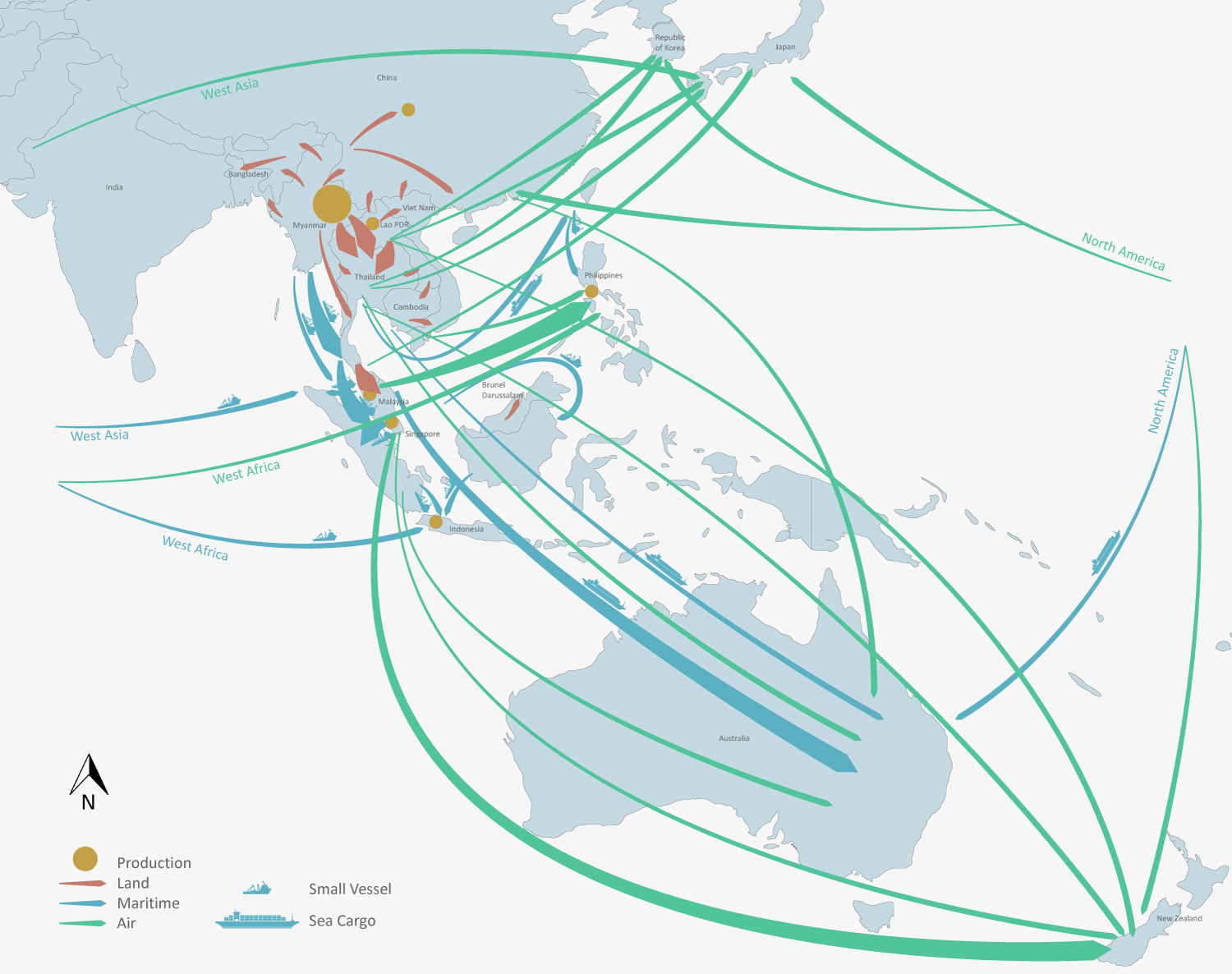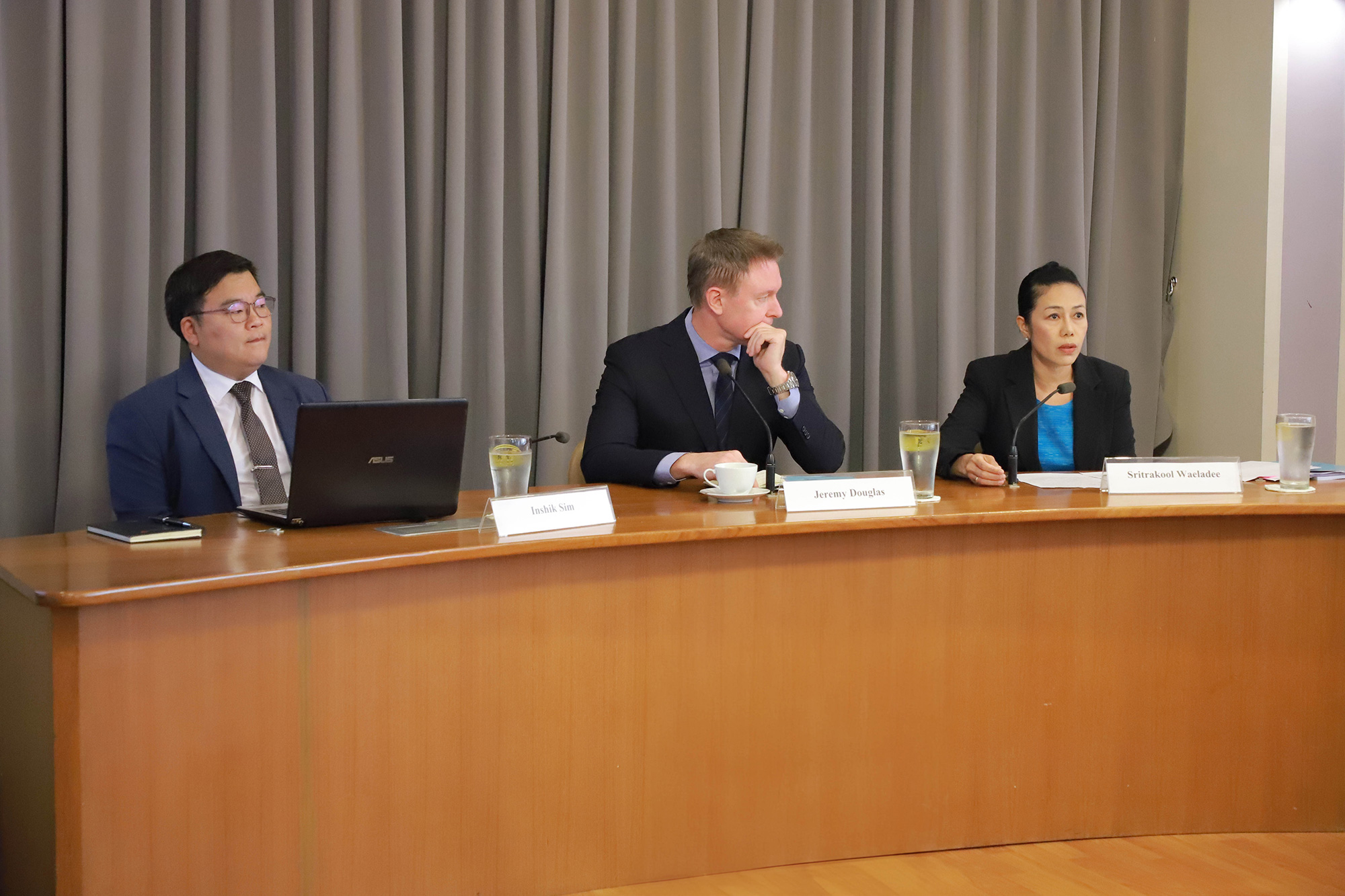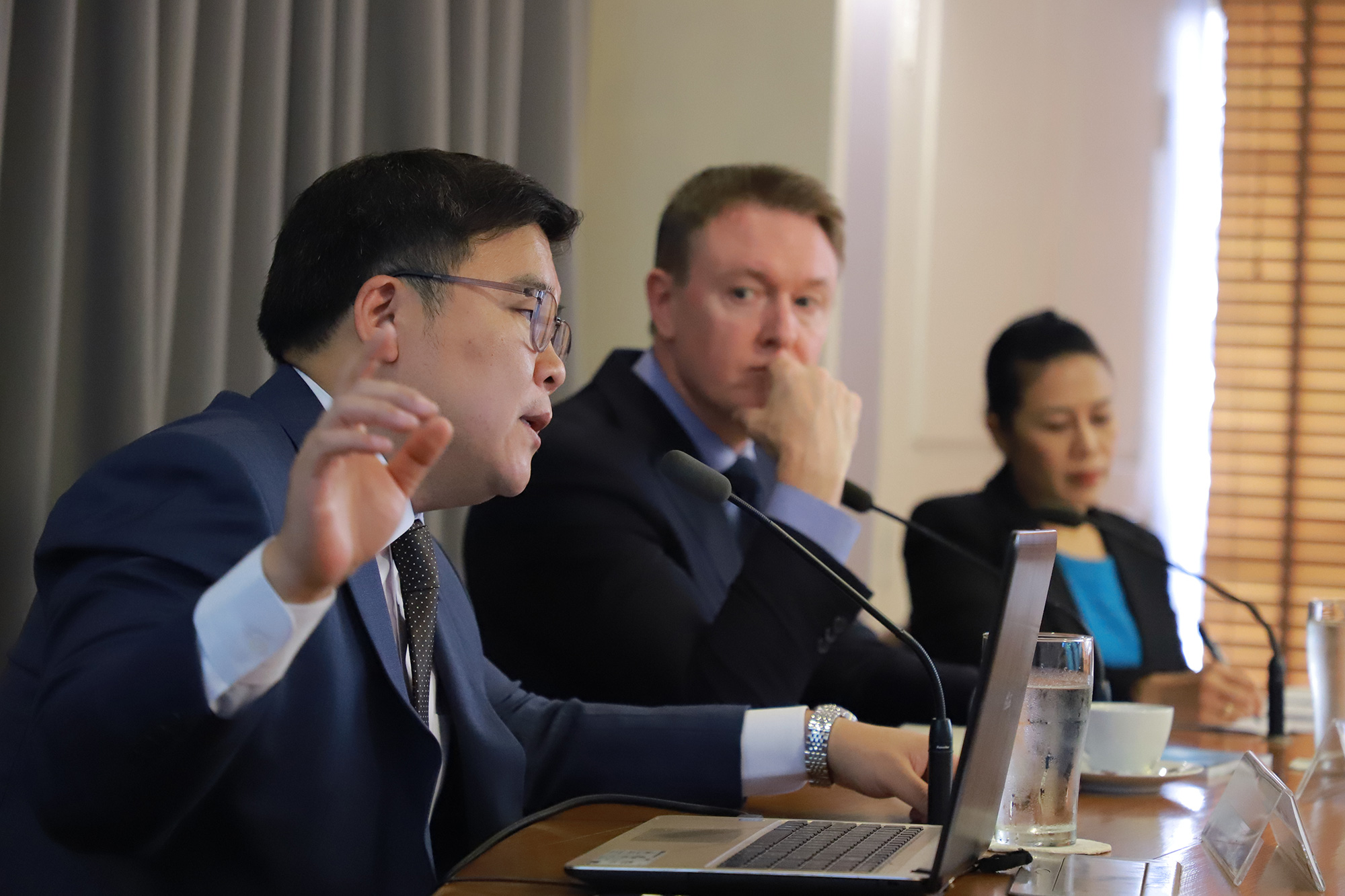UNODC report: East and Southeast Asian synthetic drug supply remains at extreme levels and diversifies


Methamphetamine seizures in 2022 returned to pre-COVID-19 levels in East and SE Asia with nearly 151 tons seized in-part because land borders, particularly in the lower Mekong subregion, remain very vulnerable to the trafficking of related chemicals. At the same time, intensified law enforcement efforts in Yunnan China and along the Thai border with Myanmar resulted in a large drop in methamphetamine seizure levels in China and a slight decrease in Thailand, leading to an increase in use of maritime routes for large shipments. South Asia has also been further integrated into the Southeast Asian market, with methamphetamine trafficked in high volumes from Myanmar into Bangladesh and rising frequency into northeast India. Notably, wholesale and street prices of methamphetamine remained at, or fell to, record lows in 2022 across the region, indicating supply was uninterrupted.
Beyond methamphetamine, the region seized a record 27.4 tons of ketamine in 2022, an increase of 167 per cent, with all countries and territories in the region reporting an increase except Hong Kong, China. Notably, large mixed shipments of methamphetamine and ketamine were seized by authorities across the region, indicating organized crime continue to push the two drugs as a package to grow ketamine demand.


“The ketamine situation in the region in many ways mirrors the supply-driven approach used to expand the methamphetamine market in the mid-2010s” commented Inshik Sim, UNODC Regional Coordinator on Synthetic Drugs. “That being said, information on ketamine use is limited, and it is unclear how widespread it is – research is badly needed.”
At the same time, synthetic drugs containing a mixture of substances and sometimes packaged alongside legal products continue to be found throughout East and Southeast Asia, with serious health consequences for those who knowingly, or unknowingly, consume the products.
UNODC is working closely with countries in East and Southeast Asia to monitor the drug situation, identify drug trends, and provide advice on cooperation, detection, precursor chemical control and public health strategies, as well as help countries collaborate on joint and cross-border operations.
View the original

